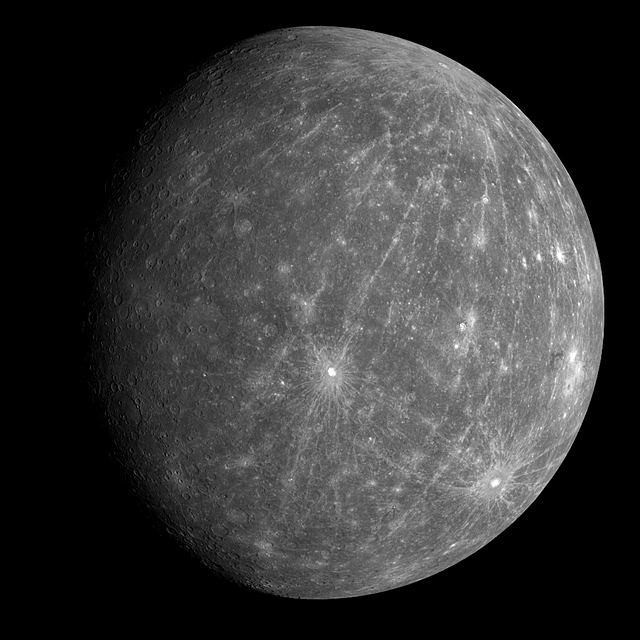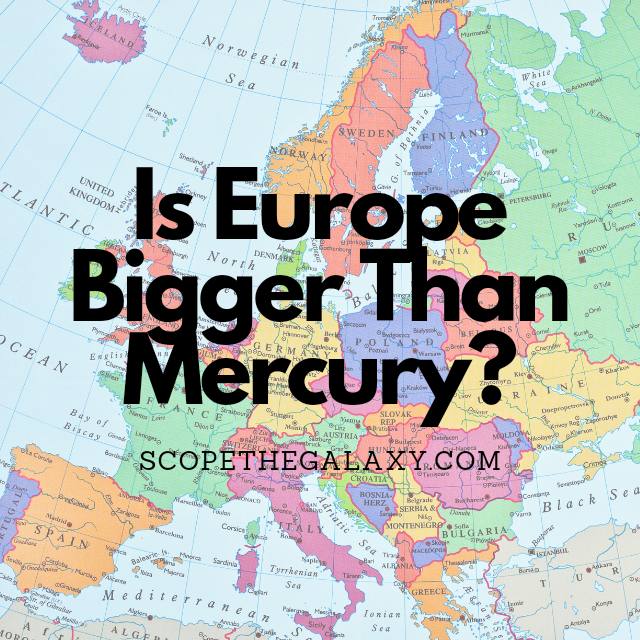*This post may contain affiliate links. This means we may make a commission if you purchase an item using one of our links*
Europe is the second smallest continent on Earth, whilst Mercury is the smallest planet in our solar system. Still, there’s no comparison regarding which one is bigger as the former is a flat land mass with a surface area of 10.53 million square kilometers and a volume of 420 million cubic kilometers while Mercury is a spherical body with a surface area of 74.8 million square kilometers and a volume of 60.8 billion cubic kilometers.
For a more detailed look at what makes Europe and Mercury as big as they are, continue reading as it will be covered in more detail below.
How Big Is Europe?

Europe is technically considered the second smallest continent in the world, only beaten by Australia. Europe comprises the far west projecting peninsula of Eurasia, a landmass it shares with Asia, and the small continent makes up 2% of the earth’s surface.
Europe’s territory can be tricky to pinpoint. But we will do our best to explain it for you; the Artic ocean borders its to its North and the Atlantic Ocean lies to its West. To the South lies the Mediterranean and Black seas, the Kuma Manych Depression, the Caspian sea, the Ural mountains, and the Zhem River divide it from Asia.
From north to south, Europe covers an area of 3,341 kilometers and spreads approximately 2,154 from east to west. However, because it is an irregular shape, these measurements, when totaling the circumference to find out the land mass, you end up with a greater number; Europe covers a total landmass of 10.53 million square km.
Europe’s coastline is full of seas, fjords, and bays and runs for approximately 38,000 km. It has several islands, including Iceland, Ireland, the British Isles, Sardinia, Malta, Crete, and Cyprus.
As Europe is a continent, it comprises various countries, each with its borders. Some of the largest countries in Europe and their landmasses include France, with 547,030 square kilometers; Sweden, with 449,964 square kilometers, Ukraine, with 603,700 square kilometers; and Poland, with 312,685 square kilometers.
As a result it overall volume if say the average crust across all of the countries present within in it were to 40km, would be 420 million cubic kilometers.
How Big Is Mercury?

Mercury is the smallest planet in the Milky Way, with a diameter of 4,878km – around 50% larger than the diameter of Mercury. At only two-fifths the size of Earth, Mercury is even smaller than the largest moons in our solar system, Ganymede and Titan.
This planet is a similar size to our moon and is only 58 million kilometers from the Sun, which means that the Sun would appear three times larger if we were standing on Mercury compared to standing on Earth. And because of this proximity, surface temperatures reach as high as 430 degrees Celsius during the day.
This rocky planet possesses an iron core that comprises a large part of the interior; it accounts for around three-quarters of Mercury’s diameter. Approximately 70% of Mercury’s weight is attributed to its iron, with the core a similar size to our moon. Atop the core sits a rocky mantle of approximately 55km in thickness.
The surface of Mercury is similar to that of our moon, with a number of impact craters caused by meteorite collisions. Some of the most significant impact basins include Caloris (with a diameter of 1,550km) and Rachmaninoff (with a diameter of 306km), created by early asteroid impacts.
Mercury has many areas of smooth terrain, along with cliffs that stretch for hundreds of kilometers and reach up to a mile into the sky. These cliffs were formed over billions of years as Mercury’s interior cooled and contracted.
And NASA’s research into these cliff-like landforms – or scarps – shows that Mercury continues to shrink. The size of the scarps displays their youth and suggests that Mercury is still tectonically active, just like Earth. As the interior continues to cool, the planet will continue to contract.
The surface area of Mercury is around 74,797,000 square kilometers, less than 7 times the surface area of the country of Europe.
Furthermore, Mercury is spherical in shape so it’s overall volume would blow the value of any if not all countries and continents on Earth, out of the water.
This is because Mercury’s volume of 60.8 billion cubic kilometers makes it so India’s volume doesn’t even come close to the cubic measure of even the smallest planet in our solar system.
Summary
Europe is a flat land mass while Mercury is a spherical planet so it only makes sense that the latter would be larger if all things are considered equal.
As a result Mercury is roughly 7 times larger in surface area and around 140 times larger in overall volume.

